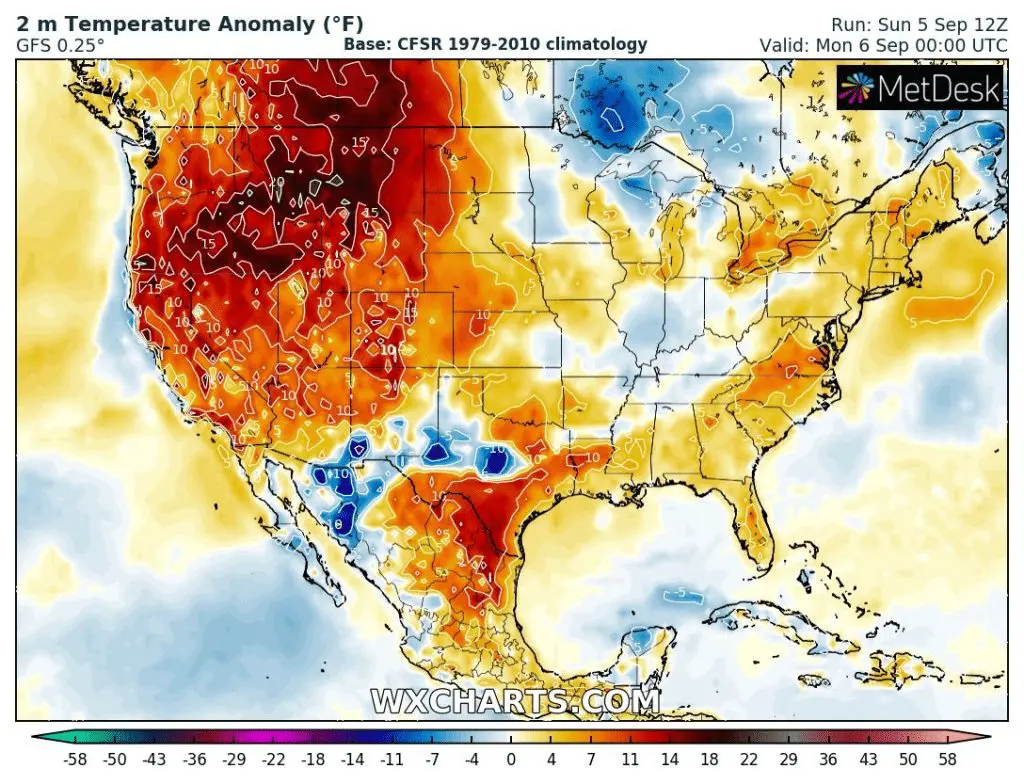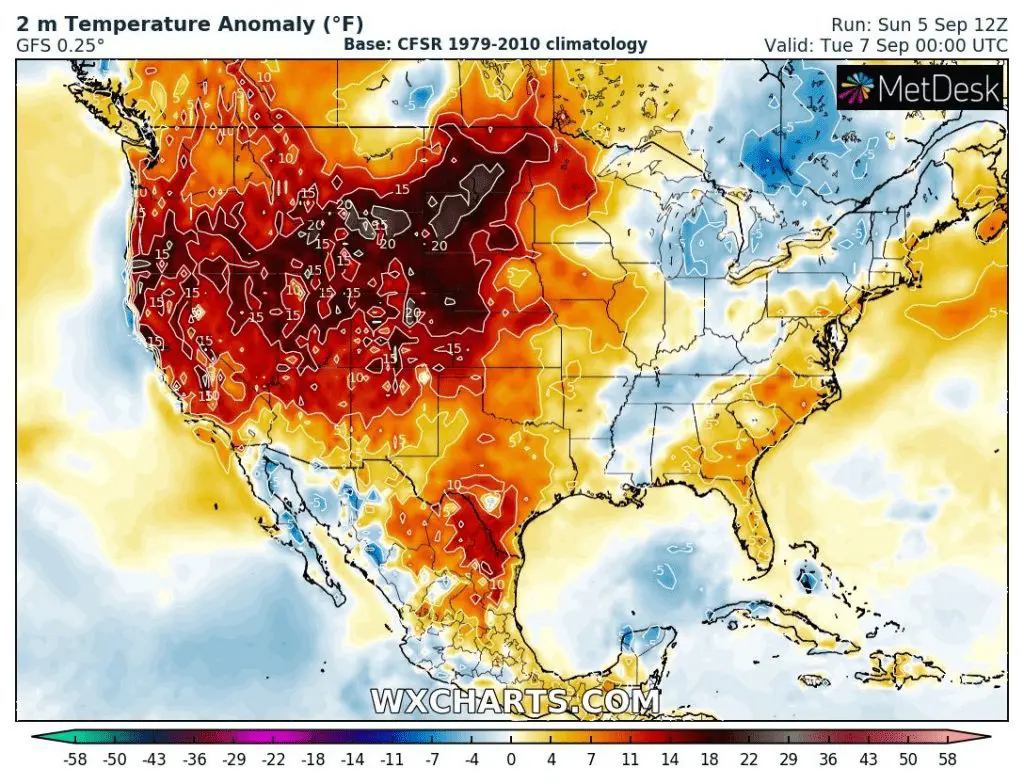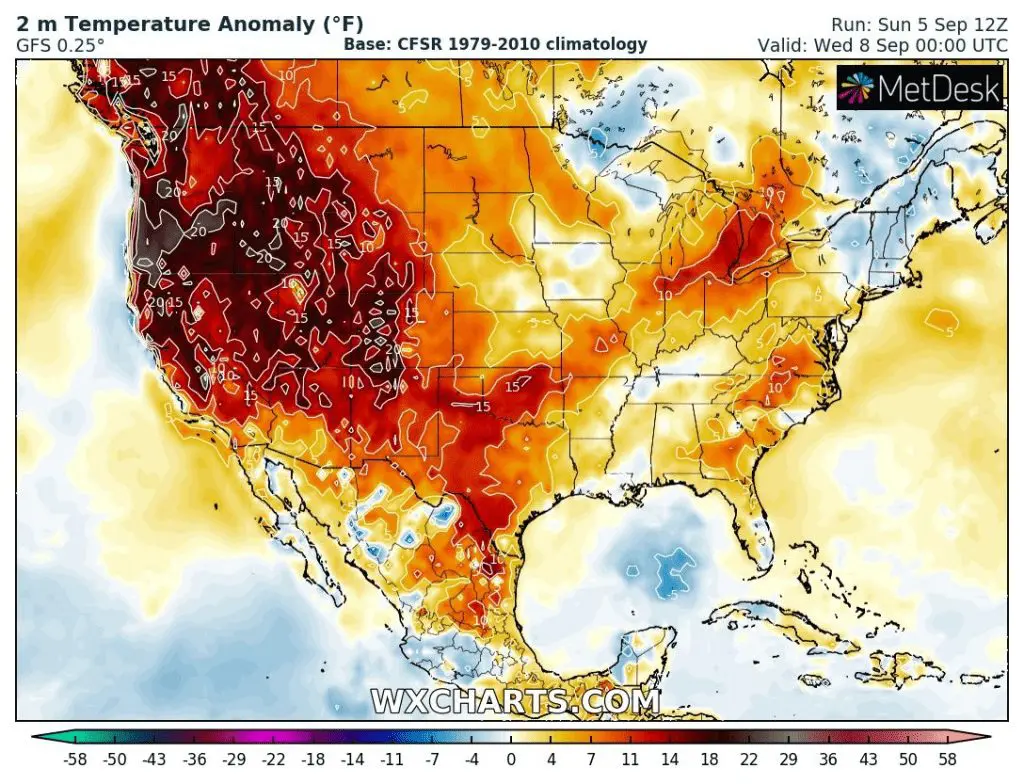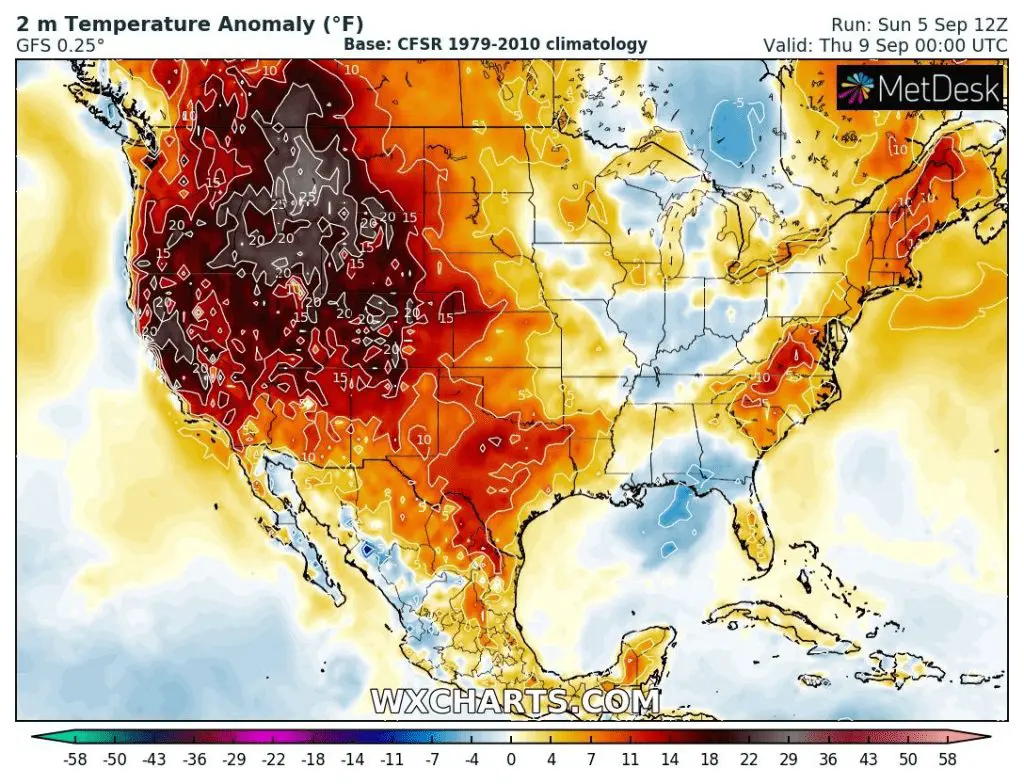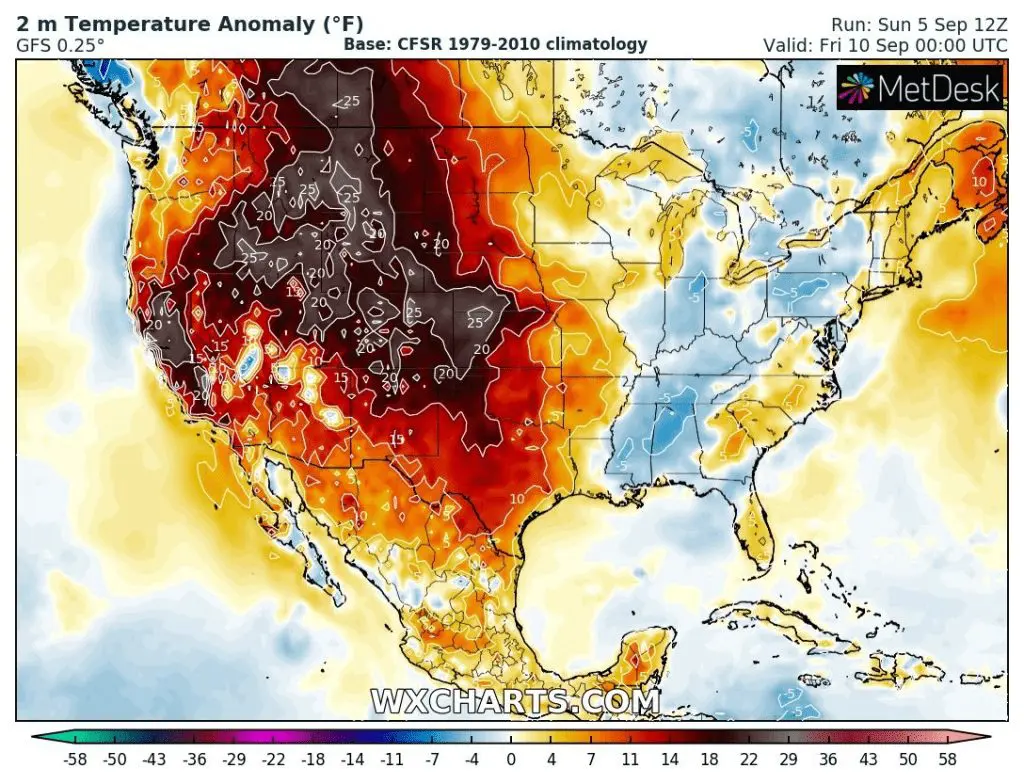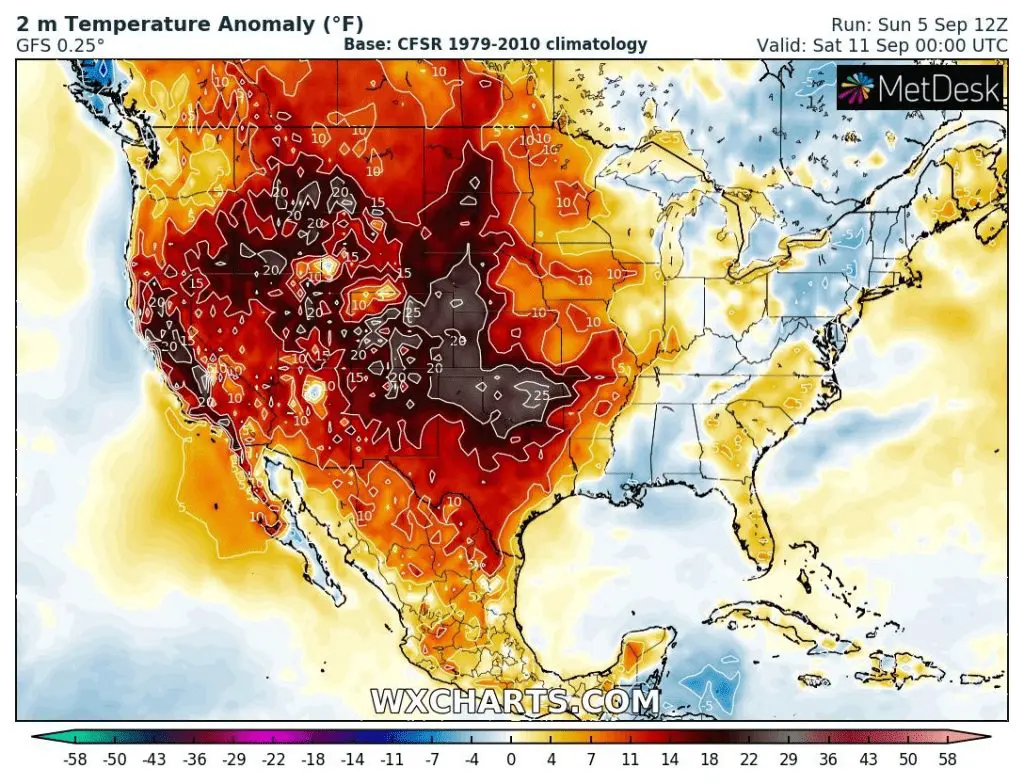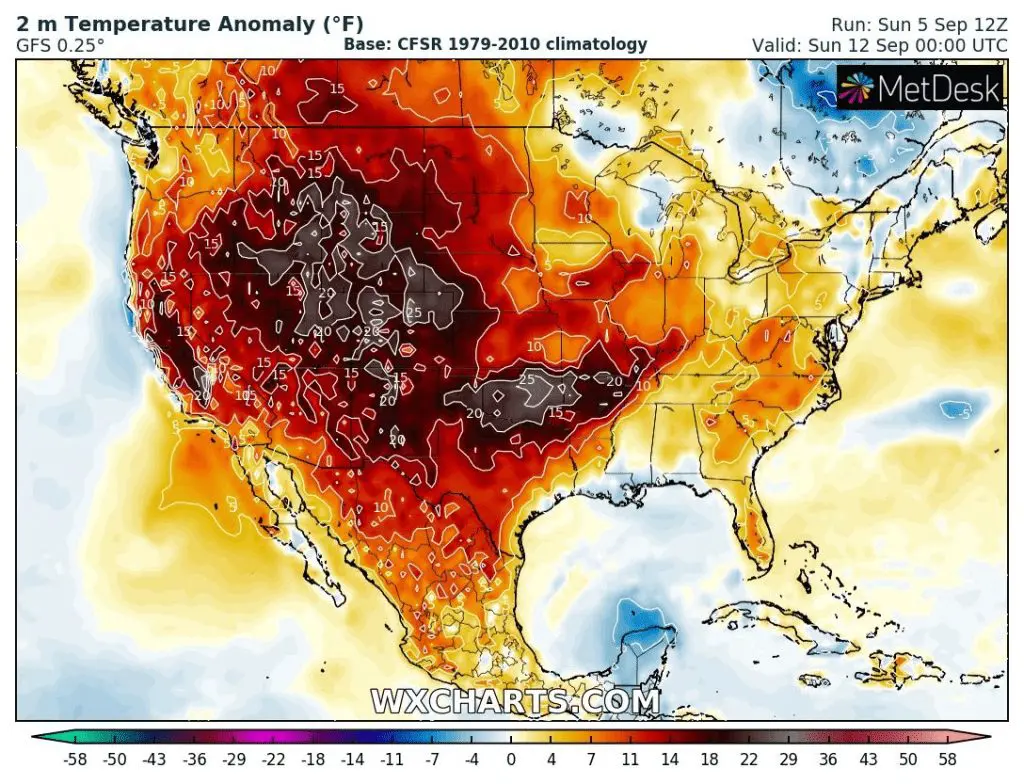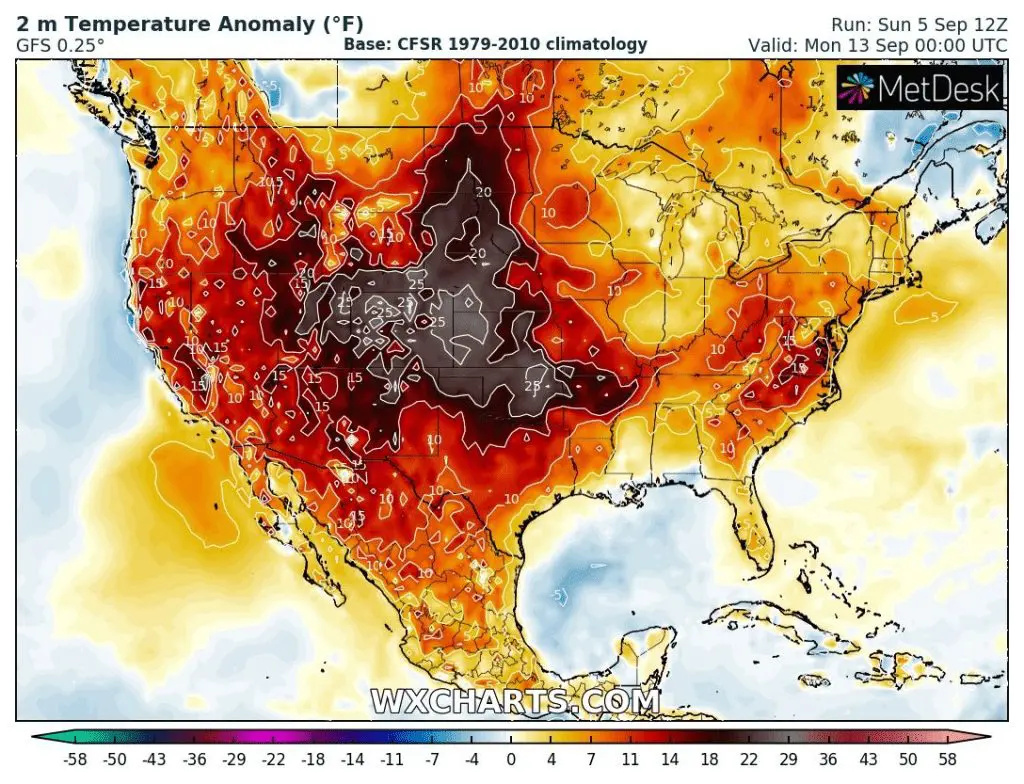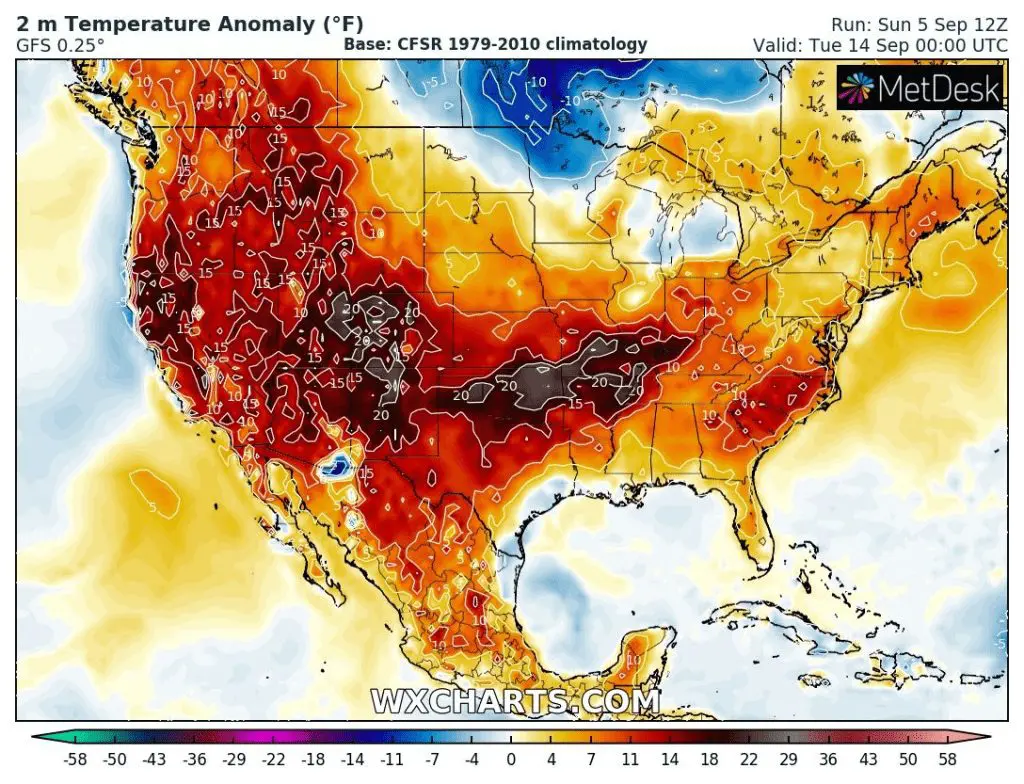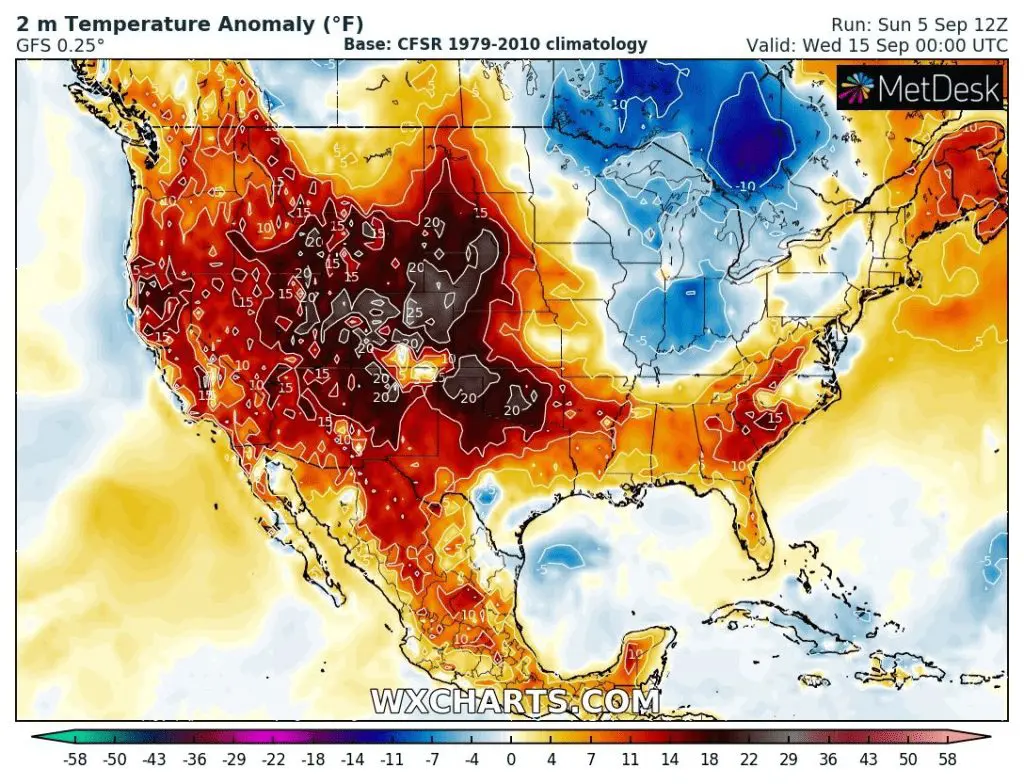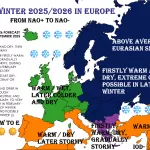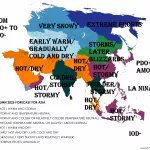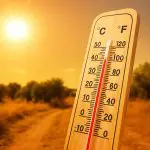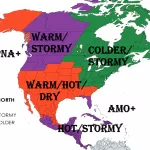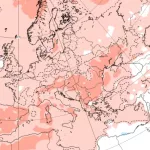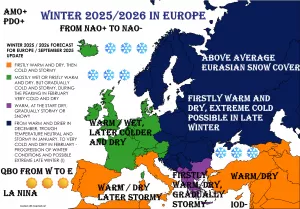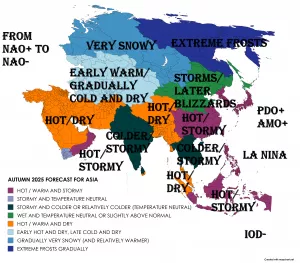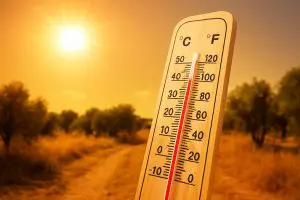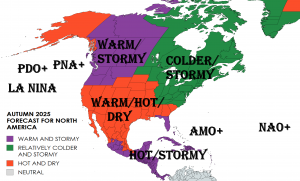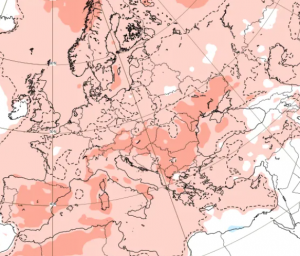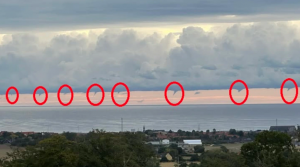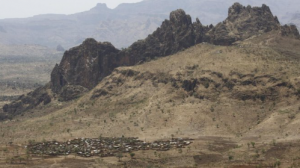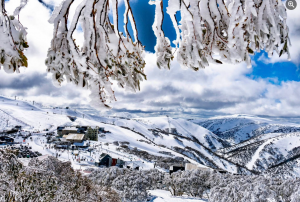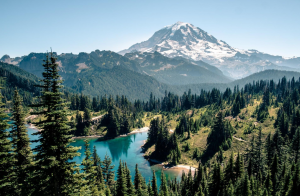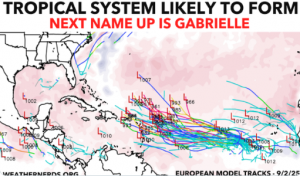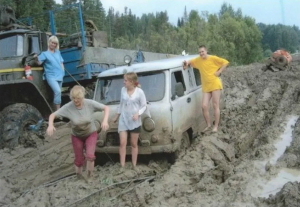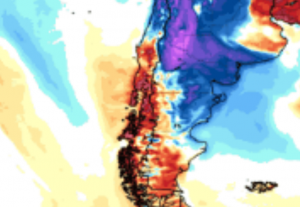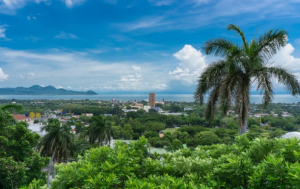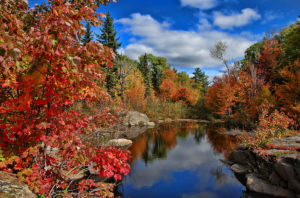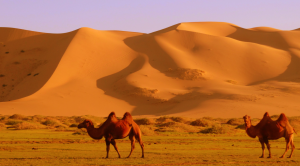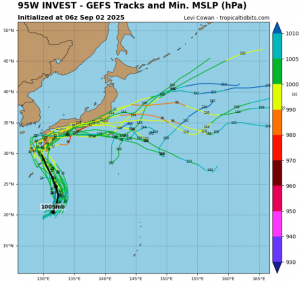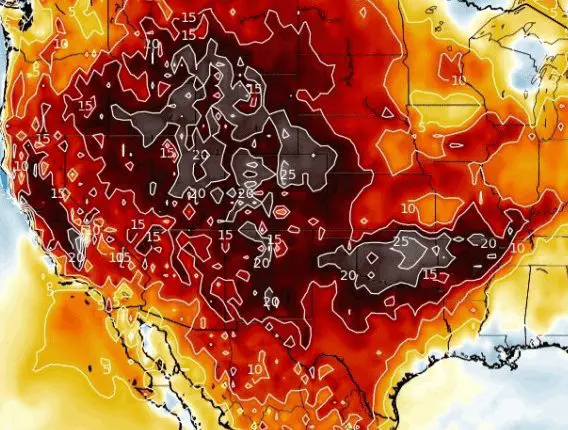
Ex-hurricane Nora brought in southwestern states, mainly Arizona and New Mexico heavy rains and regionally, daily rainfall records were broken, e.g. in Grand Junction, Colorado, where 0,76 inches / 20 mm fell od Wednesday, 1. September 2021.
Nora brought along the western coast of Mexico at the end of August 2021 severe floods and widespread damages /https://mkweather.com/ex-hurricane-nora-brings-heavy-rains-and-floods-in-southwest-the-usa/; https://mkweather.com/hurricane-nora-category-2-hits-mexico-and-southwest-the-usa-mexicali-with-a-new-mexican-national-august-record-506c//.
Before the arrival of Nora, anomalous +50,6°C was measured in Mexicali (a new monthly record for Mexico – link above) and after a transition of remnants of a hurricane, the next, long-lasting heatwave is building in the western half of the USA and neighboring Mexico and Canada.
The heatwave will persist above the western half of the USA between 5. – 15. September 2021 and it will be only slowly shifting southeastward.
The last extreme values of the year should be in a wide region from southwestern Canada to northern Mexico appear and wildfires should catch the second breath.
Tropical days (above +30°C / 86°F are possible far in the north, while Death Valley after periods of rain /https://mkweather.com/hills-in-death-valley-were-blooming-white-with-salt-precious-salt-flowers-appeared-after-a-rain-will-bring-spring-2021-extraordinary-bloom// should surprise with temperatures almost +48°C / 120°F.
Very hot will be gradually in the Rocky Mountains, with the biggest temperature anomalies reaching rarely up to 30°F from the long-term average.
Meanwhile, Canada is preparing for the first widespread snowfall of the season /https://mkweather.com/it-will-be-hard-winter-canada-under-the-snow-until-20-september-2021-including-southern-densely-populated-parts-where-70-cm-27-inches-is-possible// and in the Gulf Coast, another tropical threat is coming /the next Mkweather article/.

